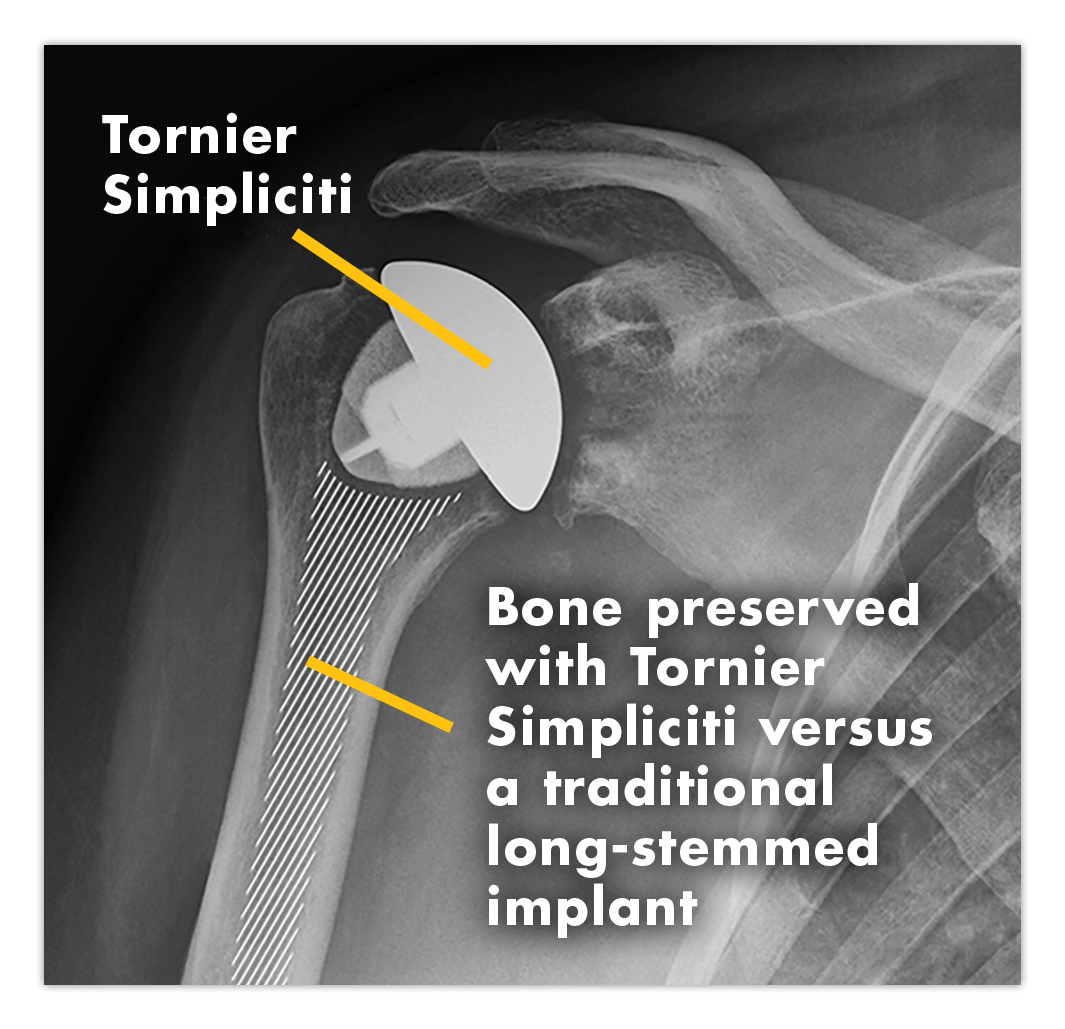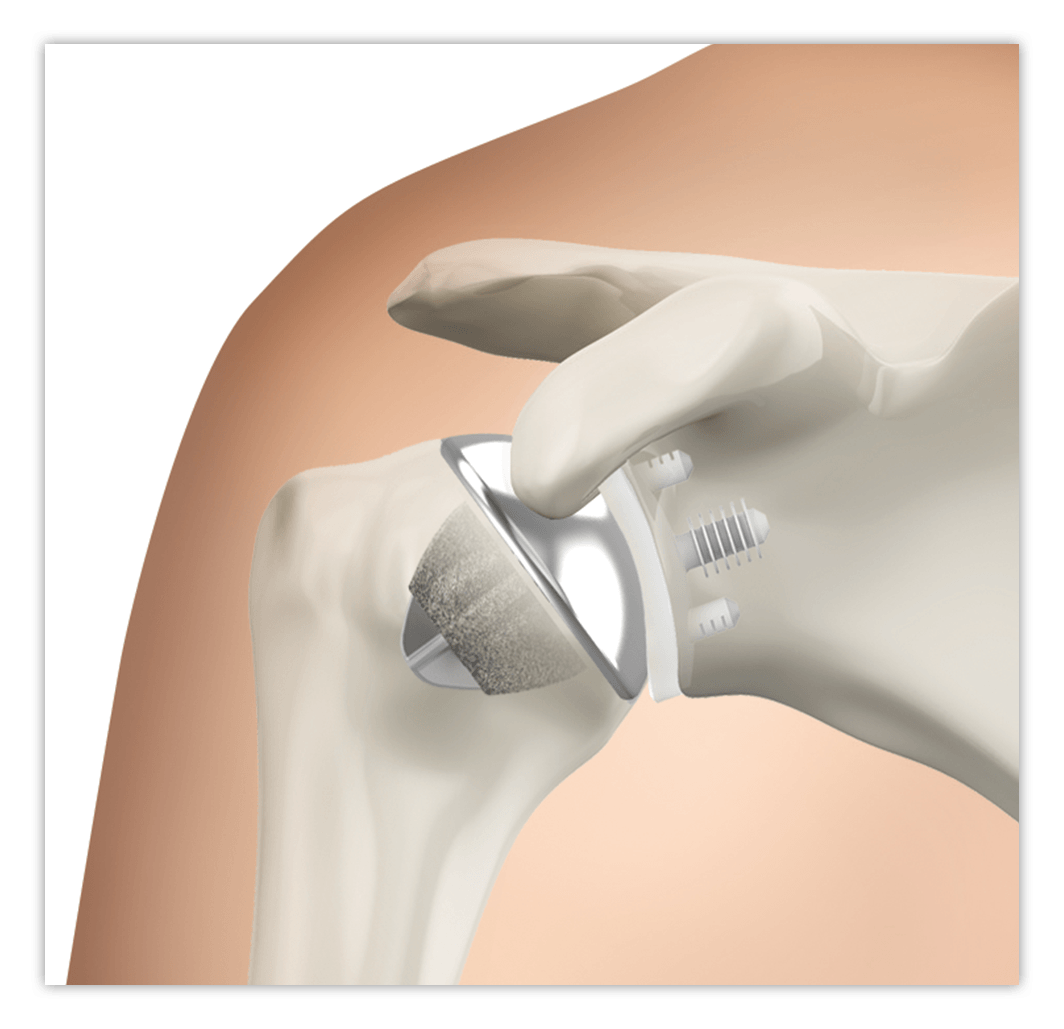During shoulder replacement surgery, the ball (humeral head) and socket (glenoid) are replaced with implants, and bone must be removed to allow the implants to be put in place. Some shoulder replacement systems have a long stem that’s inserted into the shaft of the humerus after bone has been removed.
Tornier Simpliciti is a stemless shoulder replacement system, featuring a “nucleus” instead of a long stem which means less bone is removed to secure it in place compared to a long-stem system.

Bone preservation
Stemless shoulder replacement is less invasive and preserves more bone than traditional long-stemmed shoulder replacement systems. The benefits of stemless shoulder replacement may include:
Simplified implant placement during surgery1,3
Less blood loss during surgery3
Less time in the operating room3
Less pain after surgery3, which may promote a faster recovery
Bone preservation for any future surgeries that may be needed
Less pain and more living
In a US-based clinical trial, Tornier Simpliciti showed significant improvement in patient’s shoulder pain and function.2
Greater than 60% of patients reported no shoulder pain at 6 months after surgery, the remaining patients reported mild to moderate pain4
Greater than 85% of patients reported no limitations to daily living at 2 years after surgery4
Greater than 90% of patients reported “seldom to none” sleep issues at 6 months after surgery4


Ask your doctor if Tornier Simpliciti is right for you.
You may be a candidate for Tornier Simpliciti total shoulder replacement if:
You have osteoarthritis or arthritis resulting from an injury (traumatic arthritis)
You have severe or disabling shoulder pain
You have a good functioning rotator cuff
Treatments, such as steroids or physical therapy have not helped with your shoulder pain and movement
Tornier Simpliciti is not for people with poor bone quality, metal allergies or infections.
Download this brochure to learn more about Tornier Simpliciti.
